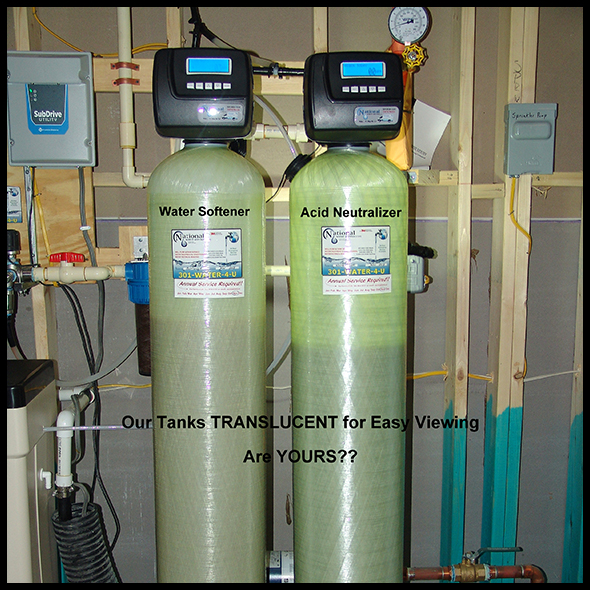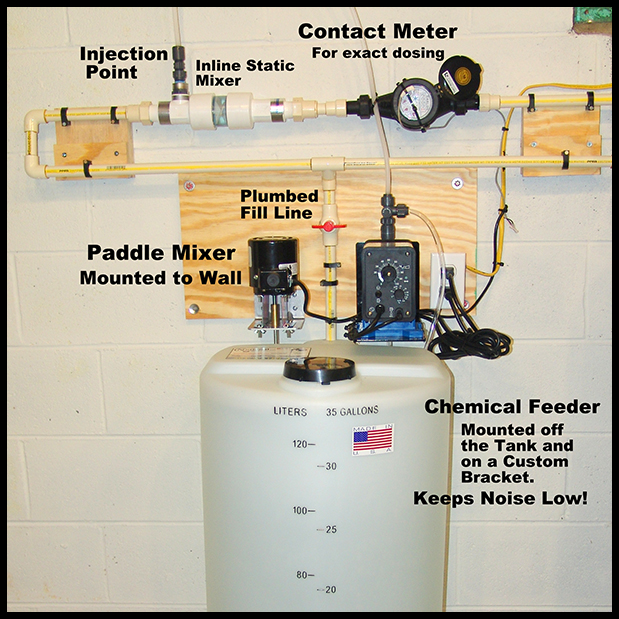What is acidic water?
When water has a pH lower than 7, it is considered to be acidic, and when the pH drops below about 6.5, the water becomes more corrosive and problematic. Acidic water can cause erosion in plumbing, dissolve metals like copper or lead into drinking water, and leave blue-green stains on fixtures.
Why you might notice the signs
Some common indicators of acidic water include:
- A metallic or sour taste in tap water
Blue-green discoloration near sinks, bathtubs, toilets, or other plumbing fixtures - Pinhole leaks or rapid corrosion in plumbing pipes and appliances
Why is this a serious issue?
Acidic water is more than a cosmetic nuisance; it can compromise both your home and your health:
It also corrodes the pipes and plumbing fixtures, reducing their lifespan.
- It can leach metals, like lead and copper, into your drinking water, which can be hazardous to your health.
- It can damage appliances and fixtures, increasing maintenance and replacement costs.

Why is acidic water common in Maryland?
In Maryland, including the greater DMV/Mid-Atlantic region, acidic groundwater is more common because of the geology. Much of the region sits on top of granite and metamorphic rock that lack the natural buffering minerals found in limestone. With fewer minerals to neutralize the acidity in rainwater and groundwater, the water will remain slightly acidic as it percolates through soils and rock.
This explains why low-pH water, pipe corrosion, staining, and plumbing problems are not uncommon for the region’s homeowners.
That’s why so many homeowners across Maryland experience pinhole leaks, green/blue staining, or premature plumbing failures—and why acid neutralizers and chemical feeders are common solutions in the area.

Two effective solutions
1) Acid Neutralizers
These systems use crushed calcite or similar media in a tank through which your water flows to raise the pH gradually to safer and more neutral ranges. They are chemical-free, rely on natural media, and are perfect for applications where low pH and corrosion are the major concerns.
2) Chemical (Solution) Feeders
Also called chemical feeders, these systems are designed to inject a controlled amount of treatment chemical-soda ash or sodium hydroxide-into the water to make precise adjustments in pH. More sophisticated, they offer high precision and are well-suited when you have multiple treatment needs (low pH + other contaminants).
Choosing the right system
- If your primary problem is low pH / corrosion and you’re looking for a simple, low maintenance solution → an acid neutralizer is for you.
* If exact pH control is required, or you have more other water quality issues like odors, bacteria, iron, etc., then a chemical feeder may be the better choice. - In most homes, a combined or multi-stage treatment approach is usually an ideal method by which professional design can ensure long-lasting performance and protection.

Why Us?
At National Water Service, we serve Maryland, D.C., and Northern Virginia and bring regional-specific expertise to acidic water issues. We start with professional water testing, then design and install custom systems (non-proprietary), and offer annual maintenance to ensure long-term reliability.
Summary Table
Water Issue | Acid Neutralizer | Solution (Chemical) Feeder |
Low pH / Corrosion | Natural calcite; low-maintenance | Manual-free, precise chemical dosing |
Additional Concerns | Best for isolated pH issues | Handles multiple issues (odor, bacteria, etc.) |
Maintenance | Periodic media recharging; simple | Requires refill of chemicals; accurate control |
Scale / Size Needs | Compact and straightforward | Flexible and scalable |
Final thoughts
Acidic water treatment is not just about bringing pH into balance; it’s about preserving the infrastructure of your home, protecting health, and giving you peace of mind. Whether you need a neutralizer or a chemical feeder, both start with a qualified analysis of your test results and a design of a system that suits your particular needs. If you’d like help interpreting your water test or comparing system options, we’re here to assist you.


